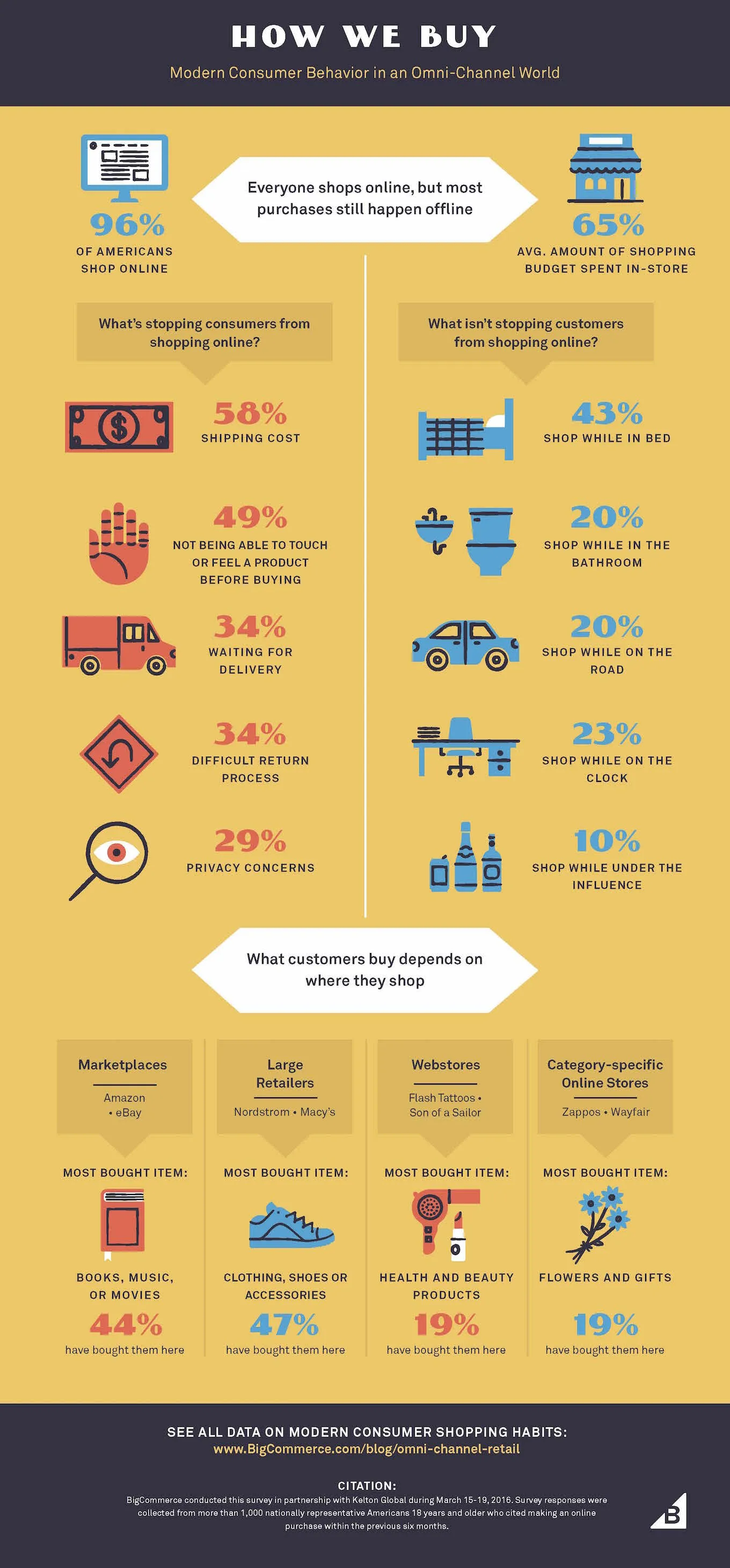True, online shopping is huge. The average American spent an estimated $1,805 shopping online in 2015. But a study just released by Bigcommerce and research firm Kelton Global discovered something interesting. While 96 percent of the 2,000 U.S. consumers surveyed shop online, they reported spending the majority (65 percent) of their shopping budgets in brick-and-mortar stores.
[RELATED: 6 New Millennial Shopping Trends]
The data bucks the “showrooming” trend — that is, consumers browsing items in stores and then going to buy them online. Now online stores are often being used to discover products, with customers going into physical stores to actually purchase the items. This trend is consistent with what other research has found to be true about millennials’ shopping trends. An Accenture study found that millennials still prefer to shop in brick-and-mortar stores, where they can touch and feel products in real life before they decide to buy them.
The findings underscore how important it is for retailers to provide a consistent omnichannel experience for consumers. Product lines — and especially prices — should be consistent across both e-commerce and brick-and-mortar stores. And for businesses looking to sustain revenue or grow sales, channel-merchandising strategies are absolutely necessary to win the buying dollars of modern consumers.
To compete in the new omnichannel environment, it’s critical for brands to understand the new buyer journey — and then adjust marketing and merchandising tactics accordingly. To give an e-commerce store a sales boost, for example, businesses might consider offering a deal on shipping. The Bigcommerce and Kelton Global survey found that shipping costs are the most common deterrent for consumers, with 58 percent of those surveyed reporting that it stopped them from a purchase.
Check out more insights in the infographic below.
![]()












